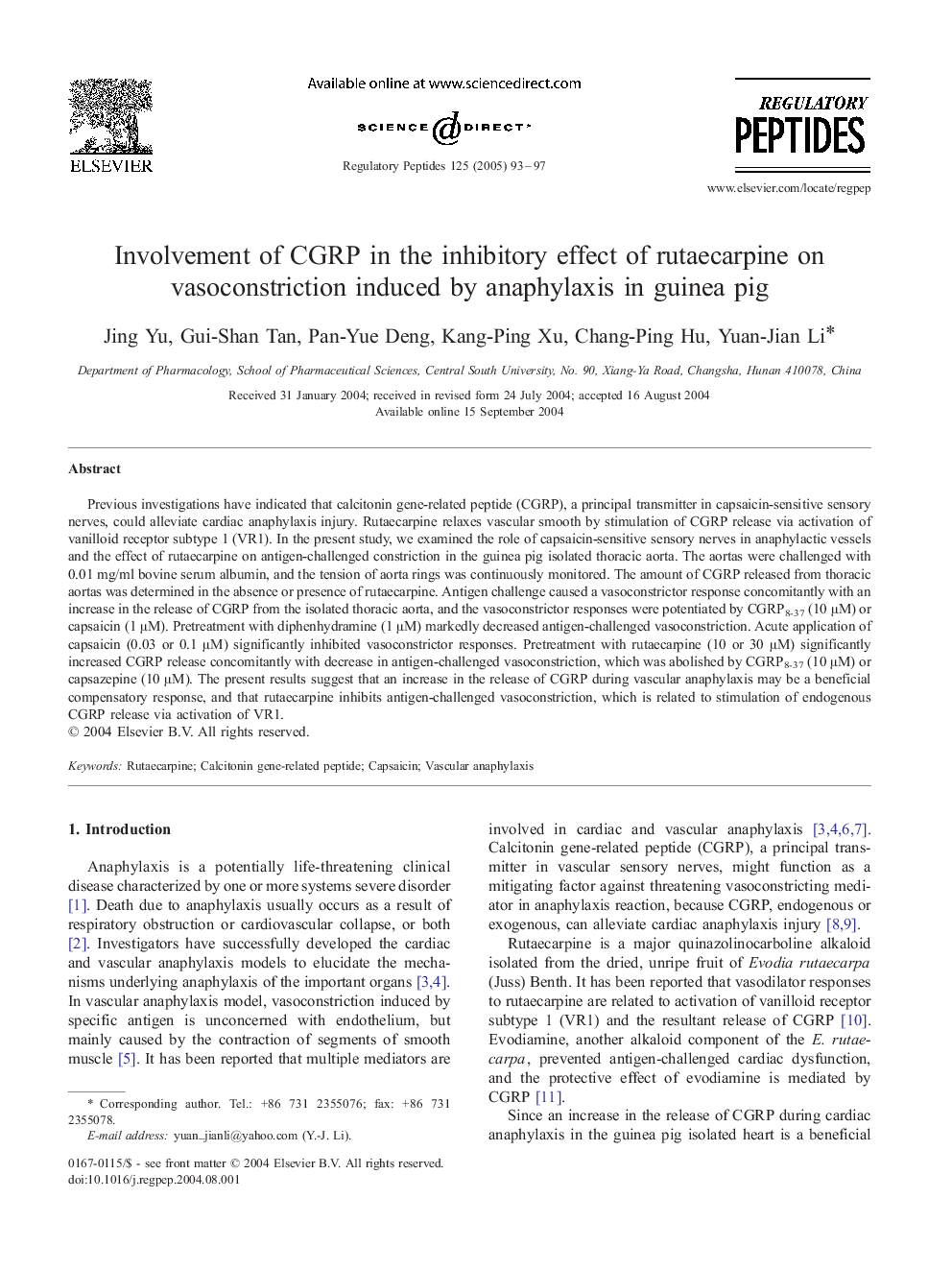| Article ID | Journal | Published Year | Pages | File Type |
|---|---|---|---|---|
| 9894506 | Regulatory Peptides | 2005 | 5 Pages |
Abstract
Previous investigations have indicated that calcitonin gene-related peptide (CGRP), a principal transmitter in capsaicin-sensitive sensory nerves, could alleviate cardiac anaphylaxis injury. Rutaecarpine relaxes vascular smooth by stimulation of CGRP release via activation of vanilloid receptor subtype 1 (VR1). In the present study, we examined the role of capsaicin-sensitive sensory nerves in anaphylactic vessels and the effect of rutaecarpine on antigen-challenged constriction in the guinea pig isolated thoracic aorta. The aortas were challenged with 0.01 mg/ml bovine serum albumin, and the tension of aorta rings was continuously monitored. The amount of CGRP released from thoracic aortas was determined in the absence or presence of rutaecarpine. Antigen challenge caused a vasoconstrictor response concomitantly with an increase in the release of CGRP from the isolated thoracic aorta, and the vasoconstrictor responses were potentiated by CGRP8-37 (10 μM) or capsaicin (1 μM). Pretreatment with diphenhydramine (1 μM) markedly decreased antigen-challenged vasoconstriction. Acute application of capsaicin (0.03 or 0.1 μM) significantly inhibited vasoconstrictor responses. Pretreatment with rutaecarpine (10 or 30 μM) significantly increased CGRP release concomitantly with decrease in antigen-challenged vasoconstriction, which was abolished by CGRP8-37 (10 μM) or capsazepine (10 μM). The present results suggest that an increase in the release of CGRP during vascular anaphylaxis may be a beneficial compensatory response, and that rutaecarpine inhibits antigen-challenged vasoconstriction, which is related to stimulation of endogenous CGRP release via activation of VR1.
Related Topics
Life Sciences
Biochemistry, Genetics and Molecular Biology
Biochemistry
Authors
Jing Yu, Gui-Shan Tan, Pan-Yue Deng, Kang-Ping Xu, Chang-Ping Hu, Yuan-Jian Li,
